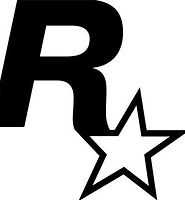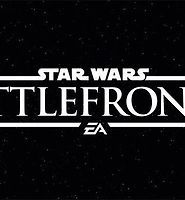| 일 | 월 | 화 | 수 | 목 | 금 | 토 |
|---|---|---|---|---|---|---|
| 1 | 2 | 3 | 4 | 5 | 6 | 7 |
| 8 | 9 | 10 | 11 | 12 | 13 | 14 |
| 15 | 16 | 17 | 18 | 19 | 20 | 21 |
| 22 | 23 | 24 | 25 | 26 | 27 | 28 |
| 29 | 30 |
- 출시
- 리그오브레전드
- 닌텐도 스위치
- 업데이트
- LEAGUE OF LEGENDS
- 플레이웨어즈
- 브레인박스
- Review
- 배틀그라운드
- 오버워치
- Microsoft
- Bitcoin
- 이원경기자
- 엔비디아
- 마이크로소프트
- 이벤트
- AWS
- 구글
- 롤
- 애플
- Apple
- 삼성
- 리뷰
- 카카오게임즈
- 인텔
- 문태환기자
- 아이폰X
- 비트코인
- 공개
- Today
- Total
IT & Life
[해외] PS4 Pro와 XBox One Scorpio, 2명의 개발자 이야기 본문
DISHONORED 2개의 리뷰가 곧 공개 될 예정이지만, 그 사이 Express Online은 스토리 텔링, PS4 Pro, Xbox One Scorpio 및 PlayStation VR에 대한 이야기 디자이너 Sachka Duval과 이야기를 나누었습니다.
DISHONORED 2 reviews will go live soon, but in the meantime, Express Online chatted with narrative designer Sachka Duval about storytelling, PS4 Pro, Xbox One Scorpio and PlayStation VR.
로 부도 2개 리뷰는 PS4와 X 박스 하나 출시일 이후, 익스프레스 온라인 부도의 이야기뿐만 아니라 프로 PS4, X 박스 하나 전갈 자리와 플레이 스테이션 VR의 영향에 대해 서술 디자이너 Sachka 듀발에 독점적으로 말을 할 때까지 살아 갈 설정되지 않았습니다.
With Dishonored 2 reviews not set to go live until after the PS4 and Xbox One release date, Express Online spoke exclusively to narrative designer Sachka Duval about storytelling in Dishonored, as well as the impact of PS4 Pro, Xbox One Scorpio and PlayStation VR.
Sachka Duval에 대한 전체 인터뷰를 읽고 Xbox 1 및 PS4에 대한 Dishonored 2 리뷰를 곧 확인하십시오.
Read on for our full interview with Sachka Duval, and check back soon for our Dishonored 2 review on Xbox One and PS4.
PS4 Pro 및 Xbox Scorpio와 같은 강력한 새 콘솔을 통해 내러티브에 접근하고 스토리를 전달할 수 있습니까? 가상 현실이란?
Can powerful new consoles like the PS4 Pro and Xbox Scorpio change the way you approach narratives and tell stories? Likewise, with virtual reality?
우리는 게임 엔진에서 모든 서사 장면 (극소수의 비디오)을 시도하기 때문에 기술적으로 제한적으로 느껴지지 않았습니다. 따라서 새로운 콘솔이 서사 팀을 위해 어떤 것도 바꿀 것이라고는 생각하지 않습니다. 나는 가상 현실이 아마도 우리가 대화를 진행하는 방식을 바꿀 수 있다고 생각하며, 불편 함을 느끼고 침수를 깨뜨릴 수있는만큼 많은 글을 쓰고 싶지 않을 것입니다. 하지만 지금까지는 VR 프로젝트에서 일한 적이 없기 때문에 여전히 나에게 미지의 영역입니다.
We haven't really felt limited technically, especially since we try to do all our narrative scenes in the game engine (very few videos), so, no, I don't think the new consoles would change anything for the narrative team. I guess virtual reality could probably change the way we stage our dialogues, and we probably wouldn't want to have as many written texts to read as it could get uncomfortable and break the immersion. But I’ve never worked on a VR project so far, so it's still uncharted territory for me.
내러티브 디자이너와 작가의 차이점은 무엇이며, Dishonored 2의 이야기를하기 위해 단어 이외의 것을 사용했을 때의 예를 들어 줄 수 있습니까?
What is the difference between a narrative designer and a writer, and can you give some of examples of when you've used something other than words to tell a story in Dishonored 2?
내러티브 디자이너는 실제 글쓰기 시간의 전후에 있습니다. 즉, 작성해야 할 모든 것을 준비하고 계획하며, 완료되면 모든 것이 올바르게 기록되고 게임 엔진에 구현되는지 확인합니다. 관련된 모든 버그를 관리합니다.
A narrative designer is there before and after the actual writing time, that is to say we prepare and plan everything that will need to be written, and when it's done we make sure everything is properly recorded, implemented in the game engine, and we take care of all the related bugs.
게임에서의 스토리 텔링은 대개 비선형이며 대화, 게임 내 책 및 노트 읽기, 임무 목표, 포스터 및 광고와 같은 환경 텍스트, 인공 지능으로부터의 전신 반응 등 다양한 채널을 사용합니다. 함께 잘 작동하고 적절한 정보를 플레이어에게 전달해야합니다.
Storytelling in games is usually non-linear and uses many different channels: dialogues, in-game books and notes to read, mission objectives, environmental texts like posters and ads, systemic reactions from the AI, etc. That's really a lot to things that have to work well together, and convey the right information at the right time for the player.
아티스트와 레벨 아키텍트와 함께 작업하여 설정 자체가 스토리의 일부인지 확인합니다. 게임의 각 단계는 신비한 일이 발생했을 때 변경된 장소이며 플레이어가 함께 구성해야합니다. 규모가 더 작더라도 조금 탐험하면 만날 수있는 사람들의 아파트를 찾을 수 있습니다. 의무적 인 것은 아니며 완전히 놓칠 수도 있지만 숨겨진 장소를 찾으면 부모님의 편지, 부모님의 편지, 버려진 수하물 등을 볼 수 있습니다.
We also work with the artists and level architects to make sure that the setting itself is part of the story: each level of the game is a place that was changed when something mysterious happened and it's up to the player to piece it together. Even at a smaller scale, if you explore a bit you can find the apartments of some of the people you can meet. It's not mandatory and you can completely miss it, but if you find those hidden places, maybe you'll see a picture of a loved one, a letter from a parent, some abandoned luggage... and you'll discover another side of the character.
비디오 게임 업계에서 일을 시작한 이래로 내러티브를 만드는 과정이 어떻게 바뀌 었습니까?
How has the process of creating a narrative changed since you started working in the video game industry?
나는 많은 사람들이 좋은 서사가 게임의 성공에 절대적으로 중요하다는 것을 지금 확신하고 있다고 생각한다. 또는 물론 일부 게임은 스토리 텔링이 필요하지 않지만 좋은 스토리와 좋은 캐릭터는 게임을 기억에 남게 할 수 있습니다. 게임 포털을 생각해보십시오. 훌륭한 게임 플레이가 있지만, 그 위에 사람들은 항상 놀라운 AI 캐릭터 인 GLaDOS와 그녀의 스낵 라인을 기억할 것입니다. 작가는 개발자와의 접촉이 거의없는 외부 계약자였습니다. 또는 때로는 텍스트와 대화가 팀원이 작성한 경우도 있습니다. "이야기 디자이너"라는 용어는 불과 몇 년 전부터 존재했지만, 이제는 사람들이 일반적으로 스튜디오에서 이러한 종류의 공동 작업자를 갖는 중요성을 인식하고 프로젝트 시작부터 끝까지 다른 팀과 협력합니다,
I think more people are now convinced that a good narrative is absolutely critical in the success of a game. Or course some games don't need storytelling at all, but a good story and good characters can make a game memorable. Think of the game Portal: it has great gameplay, but on top of that, people will always remember the amazing AI character GLaDOS and her snarky lines. Writers used to be external contractors with little contact with the developers. Or sometimes the texts and dialogues were written by anybody on the team. The term "narrative designer" has only been around for a few years, but now people are generally aware of the importance of having these kind of collaborators directly in the studio, working with the other teams from the start of the project to the end, so that the narrative elements become a real part of the experience, and not an afterthought.
비디오 게임 내러티브를 형성하기 위해 너무 많은 요소 (컷씬, 개체 설명, NPC 등)가있을 때 연속성이 문제가됩니까?
Is continuity an issue when there are so many elements (cutscenes, object descriptions, NPCs etc) that come together to form a video game narrative?
플레이어가 일련의 이벤트를 트리거하는 여러 가지 방법으로 말하고 완료하고 표시 한 모든 것을 추적하는 것은 매우 어렵습니다. 개발 과정에서 모든 것이 끊임없이 바뀝니다. 대화를 더 짧게하거나 임무를위한 추가적인 단서를 포함해야합니다. 또는 목표를 확인하기위한 조건이 더 이상 동일하지 않거나 텍스트에 변형을 추가하는 것을 잊어 버렸을 수 있습니다. X에게 말했지만 Y를 죽이지는 않았지만 은밀한 자물쇠를 발견했다 ... 등등. 거의 끝나지 않습니다. 다행스럽게도 우리는 QA 팀의 도움과 빈번한 플레이 테스트를 통해 가능한 한 이러한 불일치를 추적 할 수 있습니다. 그러나 솔직히 말해서 그것은 대화 형 픽션을 쓰는 재미입니다.
It is and it's really quite hard to keep track of everything that is said, done and shown, with the multiple ways that a player triggers a sequence of events. Everything changes constantly during development: a dialogue needs to be shorter, or to contain an additional clue for the mission, or the conditions to validate an objective aren't the same anymore, or maybe you forgot to add a variation in a text if you talked to X but didn't kill Y but found the secret lock... and so on. It's almost never-ending. Fortunately we can count on the help from the QA team and on frequent playtests to track down as many of these inconsistencies as possible. But to be honest, that's precisely the fun of writing interactive fiction.
당신이 원래의 부정한 것을 연구하고 조사한 후에 폐기되거나 변경되어야 할 아이디어가 있습니까?
Are there any ideas that had to be scrapped or changed after you went back and researched the original Dishonored?
당연히 우리는 항상 첫 번째 Dishonored에서 사실을 확인하여 우리가 자신과 모순되지 않았는지 확인했습니다. 항상 날짜를 확인하고 두 인물이 서로를 알기 위해 이전에 만난 적이 없는지 확인했습니다. 우리가 바꿔야 할 첫 번째 일 : 우리는 첫 번째 임무에서 던 월집 전역에 눈이 내릴 계획이었습니다. 컨셉 아트는 정말 예쁘고 모든 사람들은 던 월 (Dunwall)을 아주 다른 분위기로 보는 아이디어에 흥분했습니다. 그러나 이야기와 관련된 이유로 임무는 첫 번째 게임에서와 똑같은 해의 기간, 즉 여름에 이루어져야한다는 것을 깨달았습니다. 그래서 우리는 눈을 잘라야했습니다!
Of course we constantly checked the facts from the first Dishonored to make sure we weren’t contradicting ourselves: always verifying the dates, making sure two characters never met before or on the contrary used to know each other, etc. I remember one of the first things we had to change: we were planning on having snow all over Dunwall during the first mission. The concept arts were really pretty and everyone was excited by the idea of seeing Dunwall in a very different mood. But then we realized that, for story-related reasons, the mission had to take place at the exact same period of the year as in the first game, that is to say, in summer. So, we had to cut the snow!

















